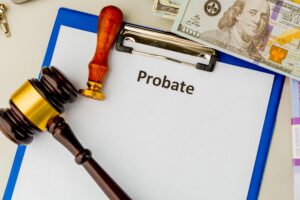September is observed as the National Emergency Preparedness Month (NPM) to encourage families and communities to be prepared for disasters that may strike unannounced.
Disasters can strike any time, be it hurricanes and floods, forest fires, or volcanoes. Hence, people need to be aware and engaged in creating an emergency preparedness plan.
COVID-19 has taught us the importance of being prepared for uncertainty. This is most apparent in the difference between our pre-pandemic and post-pandemic conversations. Previously, discussions between families and friends were mostly in light-hearted tones. Now, those same conversations are underlined with anticipation and fear of what might happen in the near future.
Creating emergency preparedness plans can bring some peace and restore normalcy to your everyday life. By being prepared, you would know you’ve done everything you can to protect yourself and your loved ones.
The theme for National Emergency Preparedness Month (NMP) this year is “Prepare to Protect. Preparing for disasters is protecting everyone you love.”
Here is a step-by-step process we can follow, based on NPM’s weekly themes that can help us be prepared:
Week 1: Make a plan
You and your loved ones may not know how to react and respond effectively when a disaster strikes. To overcome this challenge, contact family and friends and create a plan together. Here are some things to consider while creating the plan:
- Draft the plan by involving all family members
- Choose a location for shelter, like a community center or a place out-of-town
- Decide means of communication if you get separated – like text messages or radios
- Delegate responsibilities to each family member
- Update the plan regularly
- Create an emergency supply kit
Week 2: Build a Kit
By building an emergency kit, you and your family will be prepared for any emergency situation. Generally, an emergency supply kit includes:
- Water for drinking and sanitation
- Non-perishable food
- Battery-powered radio with extra batteries
- Flashlight
- First-aid kit
- Dust and face masks
- Local maps
- Prescriptive medications
- Non-prescriptive medications like pain relievers and antacids
- Feminine hygiene products
- Garbage bags and plastic ties for personal sanitation
- Digital copies of important family documents
Week 3: Prepare for Disasters
By preparing for disasters, you and your family can be more in control and limit the impact of the disaster. Here are some ways you can start preparing for emergencies:
- Research the types of disasters that could affect your area
- Make your home safer
- Download the FEMA app for a list of open shelters
- Sign up for different emergency alerts – WEA, EAS, NWR
- Document and insure your properties
- Create emergency cards for each family member to access their important contacts or documents
- Use a Digital Vault to store and secure all important documents
Week 4: Teach Youth About Preparedness
Kids and teens need the most preparation in your family. The most efficient way to do this is by including them in the planning process. Below are a few ways you can do this:
- Talk to them about disaster planning
- Engage with the community
- Conduct drills that kids can participate and learn from
- Test the communication methods
When to Start Planning for Disasters
The four-week process discussed above is a way for you to get started with planning for disasters. Remember that you and your family need to revisit the plan from time to time, depending on your location and its proneness to disasters.
The continuity of the process indicates that it is always better to start right away. While it can never be too early to start preparing, it can be too late.
With that in mind, this National Emergency Preparedness Month, encourage yourself, your loved ones, and your community to begin the process of preparing for disasters and enabling yourselves to respond to them better.



